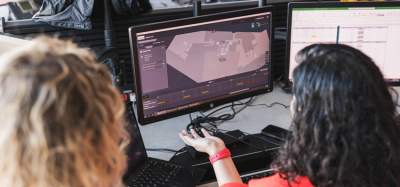Wireless fleet management
- Like
- Digg
- Del
- Tumblr
- VKontakte
- Buffer
- Love This
- Odnoklassniki
- Meneame
- Blogger
- Amazon
- Yahoo Mail
- Gmail
- AOL
- Newsvine
- HackerNews
- Evernote
- MySpace
- Mail.ru
- Viadeo
- Line
- Comments
- Yummly
- SMS
- Viber
- Telegram
- Subscribe
- Skype
- Facebook Messenger
- Kakao
- LiveJournal
- Yammer
- Edgar
- Fintel
- Mix
- Instapaper
- Copy Link
Posted: 17 March 2006 | James H. Rember P.E., U.S. Department of Homeland Security (DHS), Science & Technology (S&T) Directorate and Anthony T. (Buzz) Cerino, BPS, LLC, Principal, Bedminster, PA, USA | No comments yet
The successes and results achieved during the WFMS testing and an explanation of other security-related applications underway for this technology are delivered here by James H. Remer and Anthony T. Cerino.
The successes and results achieved during the WFMS testing and an explanation of other security-related applications underway for this technology are delivered here by James H. Remer and Anthony T. Cerino.
The aviation industry has, for well over a decade, addressed the pending transition from barcode baggage tags to radio frequency identification (RFID) baggage tags to support both security and operational enhancements. To a lesser extent, the application of RFID to other ‘asset identification and tracking’ has addressed cargo, mail, personnel, travellers and all sorts of vehicle implementations. With the International Air Transport Association’s (IATA) recent approval of a ‘standard’ for interline RFID passive baggage tag systems (via the approval of Recommended Practice (RP) 1740c, in November 2005), some significant efforts can now shift towards RFID baggage roll-outs, in addition to more extensive development/evaluation of ‘non-baggage-only’ applications of RFID.
Commencing in 2002, the U.S. Transportation Security Administration (TSA), through its Transportation Security Laboratory at the Atlantic City International Airport, has engaged in evaluation of an active ‘900 MHz’ band RFID/Global Positioning System (GPS) combination technology, specifically designed to identify, locate, and track motorised vehicles traversing airport operations areas (AOA). This system recently completed three highly successful phases of testing, on a limited scale, at Newark, NJ’s Liberty International Airport (EWR). This Wireless Fleet Management System (WFMS -as it is officially titled) was originally designed primarily for commercial/industrial application but later developed with the DHS/TSA to incorporate significant additional security-focused functions.
The system
The ‘heart’ of the WFMS is the vehicle asset communicator (VAC), the unit which is integrated into each vehicle intended to be managed. The VAC installation necessitates connection to the vehicle’s ignition systems and, depending on the complement of features desired to be implemented, the VAC also ‘connects’ to other sensors and equipment to, for example, monitor collisions and validate approved drivers’ personal identification numbers (PINs) or biometrics. Via two-way wireless RF, each VAC independently communicates with the WFMS operator/control subsystem (a software component able to be installed on a standard PC or any other existing control centre computer) where operator assignments and other vehicle access/restriction data is inputted and stored. The VAC, if so desired, can also be commanded to perform a wide variety of functions, even in the absence of continuous RF connectivity with the command centre. A diagram of the overall WFMS configuration is shown below.
Security features
The WFMS, at the time the project commenced, represented the most robust and versatile system of its kind already in commercial use. The many features embedded within the original WFMS, coupled with the ‘expandability friendliness’ of the system, made it the ideal choice for port security applications as well. Specific tracking and security-related features evaluated were:
- geo-fencing (the ability to define ‘imaginary boundaries’ for any vehicle and alert or deactivate the vehicle if the boundary is breached)
- operator keypad (PIN)/proximity card ‘token’ reader identification required to ‘start’ approved vehicle based on type, location, and shift assignment
- secure wireless remote access to a real-time control centre monitor display
- real-time data reporting via local area network (LAN), including vehicle/driver location and vehicle usage
- visual playback of historical, time-specific vehicle/driver location/travel; and,
- satellite Global Positioning System (GPS) receiver interface for more precise location detection
A screenshot of the control centre, graphical viewer monitor display employed in the EWR Port Authority Command and Control Centre is shown in Figure 2.
Test phases
The WFMS at EWR was a limited-scale trial to demonstrate RFID-based tracking and locating of port-owned vehicles, ground support equipment (GSE), and commercial (vendor) fuel trucks on the AOA. This technology is considered effective against some insider threat tactics as well as the threat of a stolen or hijacked ramp vehicle used for terrorist actions. The overall objective of this operational evaluation effort was to demonstrate the capability of the vehicle tracking technology to operate in an RF-rich AOA environment (essentially New York City metro area) on a moderate scale.
The testing was accomplished in a three-phase process. The Phase Zero test configuration consisted of two installed (communications) Gateway nodes at the Port Authority of New York and New Jersey (PANYNJ) Police Administration Building (Building 1) at EWR and two PANYNJ vehicles. The test configuration for Phase One included eight Gateway nodes, six of which were deployed at various guard posts around EWR as well as the two located at Building 1. In addition, the Phase One configuration included vehicles belonging to the PANYNJ as well as tenant organisations, which were added to the trial as their vehicles were equipped. These vehicles were integrated into the system in groups of about 10 to 20 at a time, along with trained drivers/operators, to begin using the system. Finally, in Phase Two, all 80 designated vehicles were equipped and integrated and personnel identified for participation in this program were trained. Testing and operational evaluation was accomplished via methods of observation, demonstration, and data analysis, and covered all of the functional and system requirements of the WFMS. A test of the RF environment was also performed to validate antenna/gateway coverage during Phase Zero and Phase One. Figure 3 illustrates a typical Gateway/Antenna Configuration installed at Newark Liberty International.
Results
For the combined three phases of testing, the WFMS was subjected to extremely detailed and rigorous scrutiny by technical personnel intimately familiar with the design and intended operation of the system. These TSA personnel and TSA representatives were the test results validation source. They directly conducted all testing, data collection, and data analysis based on the most stringent of plans and procedures. In summary, no system requirements evaluated resulted in failures, although some requirements, by necessity, were waived due to the inability of these processes to ensure ‘accurately recorded’ quantitative or qualitative results. This was a limitation as a result of the trial implementation/ schedule/configuration and not an observed limitation of the WFMS.
Although the listing of each and every evaluation requirement would be too extensive for the space allotted for this article, a summary by phase of the results is shown in Table 1.
Current WFMS efforts
Jacksonville, FL Seaport (JAXPORT) Blount Island Terminal
Although fully expected in the limited 8 Gateway/80 vehicle EWR configuration, assessment of a complete terminal system was not conducted. The EWR testing did verify that reasonable RF engineering care needs to be employed to ensure an optimum RF Gateway network is installed and validated. This conclusion led to the current effort to install a ‘full terminal’ WFMS at JAXPORT’s Blount Island terminal. This configuration will clearly quantify any lingering RF-environment/system implementation requirements, not addressed at EWR, which may remain and thus allow the transition to any desired airport/seaport WFMS full rollout.
Passive RFID tag reading
For AOA usage, the accurate locating of passenger baggage and cargo/mail has numerous operational and security benefits. Until now, even the most expansive RFID-based baggage tracking system, has projected tracking bags from check-in to the make-up rooms and finally at planeside (but not ‘en-route’ from the makeup room to planeside) – the latter portion by affixing readers to each and every belt and Unit Load Device (ULD) loader. This procedure, however, leaves holes in the tracking of the items, in so far as bags notoriously ‘fall off carts’ and a ULD can easily be misplaced – not to mention the technical challenge to achieving 100% read accuracy of baggage within a ULD from an external reader attempting to RF-penetrate through a potentially totally metal ULD.
To potentially alleviate this shortcoming, a VAC with all existing capabilities and an embedded passive tag reader able to read the new IATA-standard RFID baggage tags is being developed. This new VAC will come in two varieties: one, as with the current VAC, designed to be installed on baggage handling motorised vehicles; and one battery-powered, to be installed directly on a ULD or any other item container. It is anticipated that the vehicle-mounted ‘combo VAC’ will be able to read baggage towed behind the vehicle on carts, where the ULD-mounted VAC will ‘manifest’ in and out all individually tagged baggage. By incorporation of these two new VACs, an already functional WFMS would be able to precisely identify and locate at any location of the AOA each and every individual baggage.
The future of WFMS
The TSA/DHS has invested significant resources to verify the capabilities of the WFMS. The objective, as with many TSA/DHS research and development efforts, has been to work cooperatively with stakeholders in the nation’s transportation system to verify ‘systems/technology performance’ of benefit to individual stakeholder needs. The information presented clearly proves the significant operational and security capabilities afforded by utilisation of a system such as the WFMS. Anyone familiar with day-to-day activities at an air or sea port, however, also realises that not all vehicles which are authorised to be in the operations are ‘permanent stakeholder owned’ vehicles. This situation points to the need to possibly develop one more VAC variant, one that is fully portable in nature and equally supported by portable operator identification features, to facilitate any variety of temporary vehicles authorised in the operations area. This is a likely area of design/development to follow in parallel with any operational rollout of the WFMS.
A technical report, “Newark Liberty International Airport (EWR) Vehicle Tracking Demonstration – Wireless Fleet Management System”, reference number DHS/TSA/TSL-05/76, details the work described in this article, and is on file at the TSL Library at the Atlantic City, New Jersey, International Airport, and also accessible to the public through the U.S. National Technical Information Service (NITS) in Springfield, Virginia.
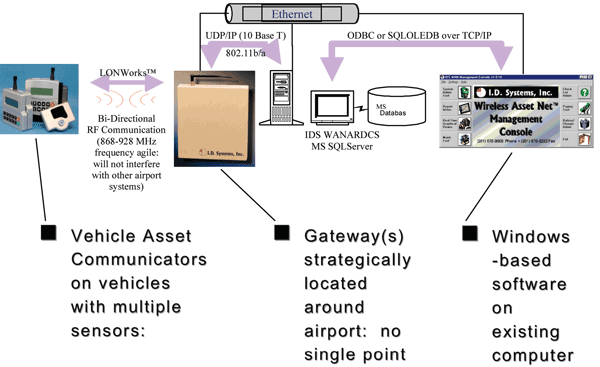

Figure 1: Wireless fleet management system configuration
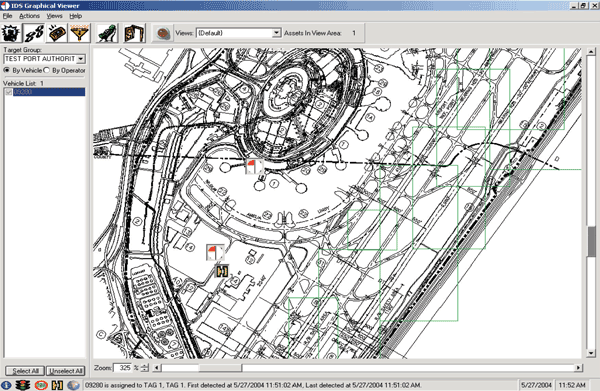

Figure 2: WFMS graphical viewer
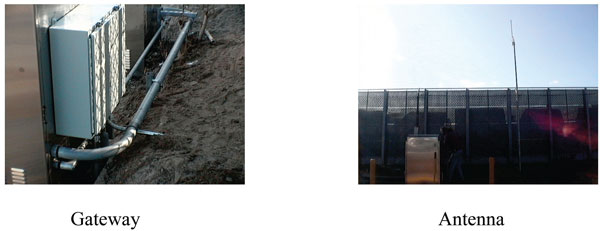

Figure 3: Typical gateway and antenna instalation
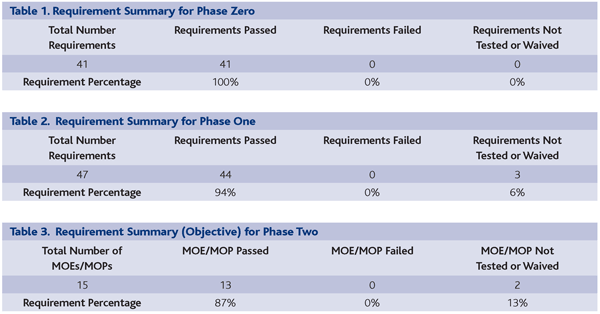

Tables 1 - 3
James H. Remer
James H. (Jim) Remer, P.E., has a broad background in Electrical Engineering with degrees from Rutgers University, New Brunswick, NJ and Stevens Institute of Technology, Hoboken, NJ USA. He is a Registered Professional Engineer, and has over thirty two years of experience in analogue and digital electronics and semiconductor device physics, as well as in theoretical and applied electromagnetics for military and civilian applications by the US Government.
Anthony T. Cerino
Anthony T. (Buzz) Cerino has a comprehensive academic background in Electrical Engineering from Drexel University in Philadelphia, PA USA. He has over thirty four years of experience in electromagnetic compatibility assessments and the test and evaluation and research and development of communications, advanced sensors, antennas and security systems for the US Government and federal/commercial transportation entities.







